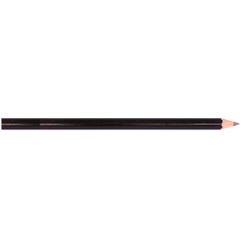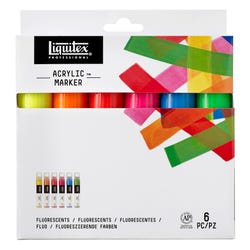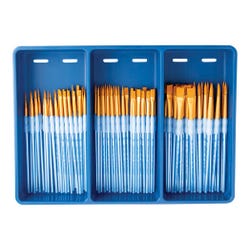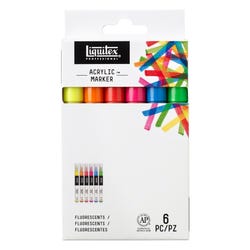Plein Air Landscapes

Description
Lesson Plan and Artwork by Joseph Culotta
In this lesson, students will create a work en plein air, a French Expression that literally means “in open air”. This “open air” opportunity will give students the venue to paint in natural light and use the values the light creates to enhance their works.
Objectives
- Teachers and students will research the history and craft of plein air painting.
- Students will study the various techniques used by plein air painters to achieve their outdoor paintings and adapt them to their own painting.
- Students will become familiar with using Illustration boards for the base of their work.
Supplies Needed
Crescent® 99 Illustration Board School Pack, 11” x 14”, Pack of 40
Sax® True Flow® Medium Body Acrylics, 12 Color Set, Pints
Royal® Brush Acrylic Handle Golden Taklon Brush Combo, Set of 72
Liquitex® Professional Paint Marker Set, Wide Tip, Assorted Colors, Set of 6 (Kit includes 2 sets)
Liquitex® Professional Paint Marker Set, Fine Tip, Assorted Colors, Set of 6 (Kit includes 2 sets)
Liquitex® Professional Paint Marker Set, Wide Tip, Assorted Fluorescent Colors, Set of 6
Liquitex® Professional Paint Marker Set, Fine Tip, Assorted Fluorescent Colors, Set of 6
Sax® Solid Drawing Pencil Classroom Pack, Pack of 12 (Kit includes 2 packs)
*Here are the supplies needed for this lesson plan for reference. Find a convenient carousel of shoppable products for this lesson below.
Standards
Standard #1: Generate and conceptualize artistic ideas and work.
Standard #2: Organize and develop artistic ideas and work.
Standard #4: Select, analyze and interpret artistic work for presentation.
Standard #6: Convey meaning through the presentation of artistic work.
Standard #8: Interpret intent and meaning in artistic work.
Instructions
1
Teacher and students will determine where they will do their plein air paintings. A place can be chosen close to school or in their neighborhood keeping in mind that plein air paintings do not have to be landscapes. They are works of art done as seen outdoors in natural light.
2
Once a location is determined students should do several sketches to determine the most interesting composition. A view finder can be very helpful in choosing the best composition.
3
Once a composition is selected students will return to the sight daily at the same time to complete their work. This may not always be possible due to time and weather. Photographs can be taken of the location to capture the effects of natural light. The photographs can help students complete the work of art in the classroom if daily outings are not possible.
4
Working on board can present the same amount of challenges to students as on a tradition support system. Students should experiment with various painting techniques on a board before starting their final work
5
When paintings are completed have student display their works and participate in a round table discussion using the following talking points.
a. The source of their subject matter and the steps they took to develop their painting.
b. The various painting techniques used and why they were chosen.
c. The basic art elements used.
The focal point in the work and how this helps understand the importance of composition in a painting.
The pros and cons of plein air painting.











